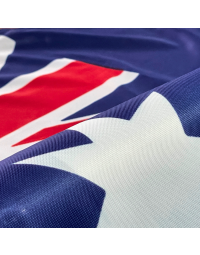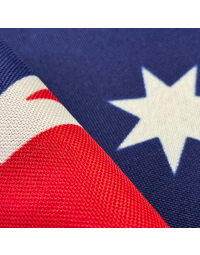Australian Flag Protocol for Australia Day: Etiquette & Display Guidelines

Australia Day is a time to come together, celebrate our shared heritage, and reflect on what it means to call this great country home. One of the most iconic ways to honour Australia Day is by flying the Australian National Flag, a symbol of our unity, history, and values.
Whether you’re a government agency, business, community organisation, or an individual, displaying the flag properly is a sign of respect and pride. Here’s everything you need to know about Australian flag protocol for Australia Day.
Official Protocol for Australia Day
On January 26, all Australian Government departments and associated portfolio agencies should fly or display the Australian National Flag throughout the day. Other organisations and individuals are encouraged to participate.
If you’re flying the Australian National Flag this Australia Day, here are some important guidelines to follow.
General Guidelines for Respectful Flag Display
When displaying the Australian National Flag, it’s important to follow these guidelines outlined in the Australian Flags Booklet to show respect and uphold proper etiquette:
Raising and Lowering the Flag
- Raise the flag briskly and lower it ceremoniously.
- The flag should be raised after first light and lowered before dusk, unless illuminated.
- During flag raising, lowering, or when the flag is carried in a parade or review, everyone present should remain silent and face the flag. Uniformed personnel should salute.
Proper Flag Positioning
- Always fly the flag freely and as close as possible to the top of the flagpole, with the rope tightly secured.
- When flown with other national flags, all flags should be the same size and flown at the same height.
- The Australian National Flag should take place of honour. If the total number of flags is even, the Australian Flag should be flown on the left as you face the building. If the total number is odd, the Australian Flag should be flown in the centre. More details and specific examples of flag positioning are available to download in our Protocol Guide.
- Two flags should not be flown from the same flagpole.
Order of Raising and Lowering
- The Australian National Flag should be raised first and lowered last, unless all flags are raised or lowered simultaneously during a ceremony.
Care and Condition of the Flag
- The flag should not be flown if it is damaged, faded, or dilapidated.
- When a flag is no longer suitable for use, retire it respectfully by either:
- Cutting it into small, unrecognisable pieces and disposing of it with regular rubbish collection; or
- Returning it to Flagworld for recycling.
Restrictions on Use
- The flag should never be allowed to fall or lie on the ground.
- Do not use the flag as a cover, except for a coffin at a funeral.
- Do not fly the flag upside down, even as a signal of distress.
By following these guidelines, we demonstrate respect for the flag as a national symbol and honour its significance to all Australians.
Why Flag Etiquette Matters
The Australian National Flag is more than just a piece of fabric; it represents our nation’s identity, history, and aspirations. By following proper flag etiquette, we honour the generations of Australians who have contributed to our country’s story and demonstrate our commitment to its values.
Need More Information?
For more details about flag etiquette or positioning, download our Flag Protocol Guide.
Let’s celebrate Australia Day with pride and respect by displaying our flag the right way.




